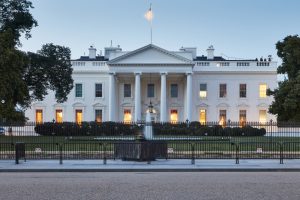This article is related to a Showcase CLE program titled “Has a New Day Dawned? Practical Advice on the Legal Ethics and Regulatory Compliance Obligations of the Corporate Transparency Act and Amended ABA Model Rule 1.16” that took place at the American Bar Association Business Law Section’s 2024 Spring Meeting. All Showcase CLE programs were recorded live and will be available for on-demand credit, free for Business Law Section members.
The enactment of the Corporate Transparency Act (“CTA”) and the adoption of ABA Model Rule of Professional Conduct 1.16 have brought back into focus a lawyer’s ethical obligations of confidentiality under ABA Model Rule 1.6, the attorney-client privilege, and the ABA’s stated position that lawyers are not gatekeepers. Both the CTA and ABA Model Rule 1.16 were enacted or adopted to address “illicit finance,” especially money laundering and terrorist financing, though—as will be explained—Rule 1.16 applies more broadly. Both involve an element of due diligence by the lawyer: one—the CTA—involves an entity client’s obligation to identify (and report on a new federal database named the Beneficial Ownership Secure System, or “BOSS”) the beneficial owners of most entities, and the other—Rule 1.16, as amended—involves a lawyer’s ethical duties to inquire and assess, both at the outset of a representation and at unspecified times during a representation, whether the prospective client or client intends to use (or is using) the lawyer’s services to perpetuate a crime or fraud. Both the CTA and Rule 1.16 are certainly applicable to the business lawyer, though Rule 1.16 is not so limited, and in fact, the Rule may well apply to a litigator who falls victim to an online scammer.
The Corporate Transparency Act
Enacted in 2021, the CTA became effective as of January 1, 2024 (though nonexempt entities in existence as of the effective date need not comply with the CTA’s reporting requirements until December 31, 2024). The focus of the CTA, according to the U.S. Department of the Treasury’s Financial Crimes Enforcement Network (“FinCEN”), is to “make it harder for bad actors to hide or benefit from their ill-gotten gains through shell companies and other opaque ownership structures.”[1] To accomplish this, information about “beneficial ownership” of nonexempt entities must be reported to the FinCEN BOSS database that will be accessible to federal and state law enforcement agencies. “Reporting companies” formed after January 1, 2024, have ninety days within which to input their information to BOSS, and those entities formed on or after January 1, 2025, will have thirty days after formation to file the same detailed report.
There are twenty-three categories of exempted entities that need not report beneficial ownership under the CTA. Those exemptions range from banks and credit unions to accounting firms and large operating companies. However, if the entity is a nonexempt corporation, limited liability company, or other entity created through filing a document with a secretary of state, the entity is a reporting company for which personal information about its beneficial owners must be input into the BOSS database. Beneficial owners are every individual who, directly or indirectly, either exercises “substantial control” over the reporting company or owns or controls at least 25 percent of the ownership interests of a reporting company.
Many, if not most, clients will feel the required information is intrusive because it includes the beneficial owner’s date of birth, residential address, and a copy of a valid driver’s license or passport. Further, reporting companies must file an updated report when there is a change to a beneficial owner’s information (e.g., a move to a new residence, a name change resulting from a marriage or divorce, a new passport number). There is a limited workaround to the beneficial owner’s obligation to report that personal information to the reporting company, known as a “FinCEN Identifier,” but all of these issues are complicated, and there are still questions surrounding how one is to file and who is a “company applicant.”
At the same time, failure to comply with the CTA has significant ramifications, including fines and the possibility of jail time. Several business lawyers have suggested that their business clients consider appointing a “CTA Compliance Officer” who is entrusted to oversee the information collection and report submission role, which may require board resolutions or amendments to the company’s formation documents.
ABA Model Rule 1.16
The amendment to ABA Model Rule 1.16 was likewise adopted with the intent of combatting money laundering and terrorist financing, though the ABA did not so limit the breadth of the Rule. The formal Revised ABA Report for Resolution 100 accompanying the proposed rule change stated:
This Resolution constitutes another piece of the ABA’s longstanding and ongoing efforts to help lawyers detect and prevent becoming involved in a client’s unlawful activities and corruption[.] . . . The proposed amendments will help lawyers avoid entanglement in criminal, fraudulent, or other unlawful behavior by a client, including tax fraud, mortgage fraud, concealment from disclosure of assets in dissolution or bankruptcy proceedings, human trafficking and other human rights violations, violations of U.S. foreign policy sanctions and export controls, and other U.S. national security violations.[2]
The Report asserted that amended Rule 1.16 would not impose new ethical obligations on lawyers with respect to conducting client due diligence; however, even if that were the case, the obligation is now part of the Black Letter ABA Model Rule 1.16. Rule 1.16, as amended, provides that lawyers have an obligation to “inquire into and assess the facts and circumstances of each representation to determine whether the lawyer may accept or continue the representation.”[3] Furthermore, if “the client or prospective client seeks to use or persists in using the lawyer’s services to commit or further a crime or fraud, despite the lawyer’s discussion pursuant to Rules 1.2(d) and 1.4(a)(5) regarding the limitations on the lawyer assisting with the proposed conduct,” then the lawyer must decline the representation or, if the representation has already commenced, the lawyer must withdraw from the representation.[4]
Importantly, the inquiry or assessment required by Rule 1.16 is a fact-specific risk-based analysis. As new Comment 2 to Rule 1.16 explains:
Under paragraph (a)(4), the lawyer’s inquiry into and assessment of the facts and circumstances will be informed by the risk that the client or prospective client seeks to use or persists in using the lawyer’s services to commit or further a crime or fraud. This analysis means that the required level of a lawyer’s inquiry and assessment will vary for each client or prospective client, depending on the nature of the risk posed by each situation.
The depth of required due diligence remains unclear, although a list of five nonexclusive factors have been added to the Comments. These five factors provide a rough guide to lawyers on what to inquire upon and how deeply to do so, and they include:
- the identity of the client, including the beneficial owners of the client if it is an entity;
- the lawyer’s “experience and familiarity with the client”;
- the “nature of the requested legal services”;
- the “relevant jurisdictions involved in the representation” and, specifically, “whether a jurisdiction is considered at high risk for money laundering or terrorist financing”; and
- the “identities of those depositing into or receiving funds from the lawyer’s client trust account, or any other accounts in which client funds are held.”
In addition to these factors, new Comments to Rule 1.16 identify a number of documents to assist lawyers in “assessing risk,” including the Financial Action Task Force (“FATF”) Guidance for a Risk-Based Approach for Legal Professionals, the Organization for Economic Cooperation and Development (“OECD”) Due Diligence Guidance for Responsible Business Conduct, the U.S. Department of the Treasury’s Specially Designated Nationals and Blocked Persons List, and ABA publications on the topic.
At least for now, the lawyer is not obligated to disclose any information that the lawyer comes to learn as a result of the inquiry or assessment and, indeed, under ABA Model Rules 1.6 and 1.18, depending on the circumstances, the lawyer may be prohibited from making that disclosure. Finally, it remains unclear at present what “triggers” a lawyer’s obligation to undertake an inquiry or assessment after the representation has begun. Does the duty arise when the lawyer “knows,” as that term is defined by Rule 1.0(f), that the client is using the lawyer’s services to commit a crime or fraud? What does Rule 1.0(f)’s “actual knowledge of the fact in question,” which “may be inferred from circumstances,” mean in this context?
Conclusion
These new (or highlighted) obligations present practical issues for lawyers. What information may the lawyer need to collect if the lawyer is asked to assist a client in its obligation to comply with the CTA—and, whether or not so requested, what (or how) should the lawyer communicate to the client about these obligations? What possible traps for business clients and the lawyers who represent them does the CTA present, and how can the risks of those traps be mitigated? What resources are available and appropriate to conduct client due diligence? What triggers the obligation to conduct due diligence after a representation has begun? While Rule 1.16 certainly applies to the transactional lawyer, does it apply to litigators as well? And what does the future hold for the lawyer’s duty of confidentiality and the attorney-client privilege given the momentum evidenced by the CTA and ABA Model Rule 1.16? These and other issues will be addressed in the CLE panel discussion connected to this article at the American Bar Association Business Law Section’s 2024 Spring Meeting.
FinCEN Beneficial Ownership Information Reporting FAQ A.2., issued Sept. 18, 2023. ↑
ABA Standing Committee on Ethics and Professional Responsibility and Standing Committee on Professional Regulation Revised Report to the House of Delegates for Resolution 100 (2023), at 1 and 2. ↑
See ABA Model Rule 1.16(a). ↑
See Rule 1.16(a)(4). ↑

















